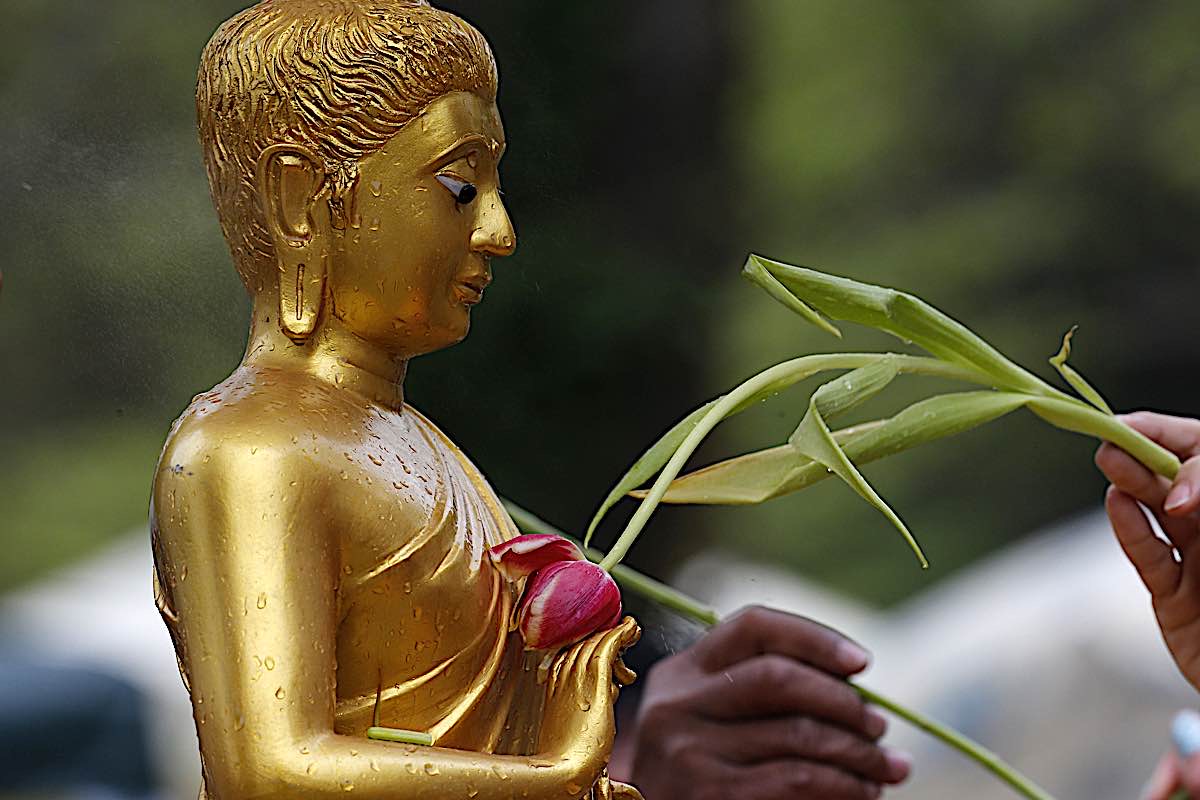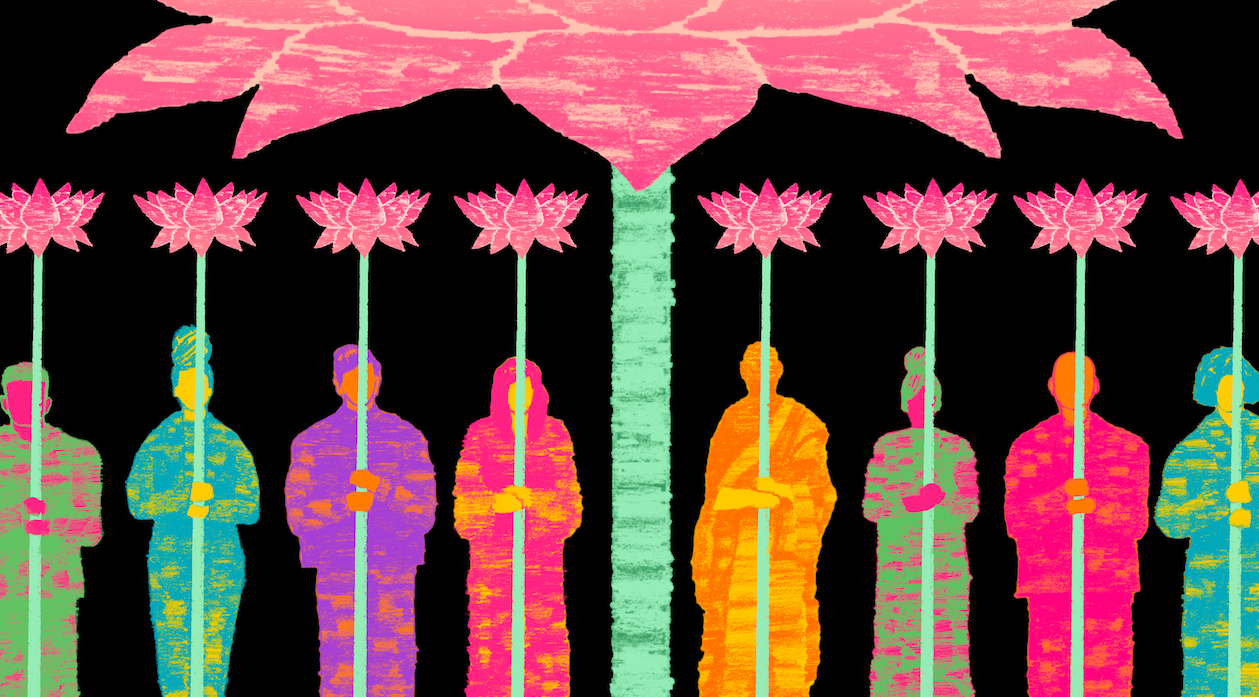A Mindfulness Practice to Transform Anger into Love
This mindfulness practice from Thich Nhat Hanh will help you face your anger and transform it into the energies of love and understanding. The post A Mindfulness Practice to Transform Anger into Love appeared first on Lion’s Roar.

When you are angry, close your eyes and ears and return to yourself in order to quell the flames. Smile, even if it takes effort. Smiling relaxes hundreds of tiny muscles, making your face more attractive. Sit wherever you are, and look deeply. If your concentration is not yet strong, you can go outside and practice walking meditation. Most essential is to water the seed of mindfulness and allow it to arise in your mind consciousness.
Mindfulness is always mindfulness of something, just as anger is always anger at something. When you drink a glass of water and are aware that you are drinking a glass of water, that is mindfulness of drinking water. In this case, we produce mindfulness of anger. “Breathing in, I know I am angry. Breathing out, I know that anger is in me.” First the energy of anger arises, and second the energy of mindfulness arises. The second energy embraces the first in order to soothe it and allow it to subside.
We do not produce mindfulness to chase away or fight our anger but to take good care of it. This method is non-dualistic and nonviolent. It is non-dualistic because it recognizes that mindfulness and anger are both parts of ourselves. One energy embraces the other. Don’t be angry at your anger. Don’t try to chase it away or suppress it. Acknowledge that it has arisen and take care of it. When your stomach hurts, you don’t get angry at it. You take care of it. When a mother hears her baby crying, she puts down what she is doing, picks the baby up, and comforts her. Then she tries to understand why the baby is crying, whether it is because of some physical or emotional discomfort.
We do not produce mindfulness to chase away or fight our anger but to take good care of it.
Look deeply at your anger as you would at your own child. Do not reject it or hate it. Meditation is not to turn yourself into a battlefield, one side opposing the other. Conscious breathing soothes and calms the anger, and mindfulness penetrates it. Within fifteen minutes of lighting the heater, the warm air pervades the cold room, and a transformation occurs. You don’t need to discard or repress anything, not even your anger. Anger is just an energy, and all energies can be transformed. Meditation is the art of using one kind of energy to transform another. The instant the mother holds her child, the child feels the energy of love and comfort and begins to feel relief. Even if the cause of discomfort is still present, being held in mindfulness is enough to provide some relief.
In the Anapanasati Sutta (“Discourse on the Full Awareness of Breathing”), the Buddha teaches, “Breathing in, I calm the activities of the mind in me.” “Activities of the mind” refers to any emotional or psychological state, such as anger, sadness, jealousy, or fear. As you breathe in and out mindfully, you embrace and calm that mental state. As soon as you are aware that anger has arisen, produce mindfulness to embrace the anger. After ten minutes, the intensity of the anger will lessen, and mindfulness will reveal many things. After holding her baby for a few minutes, perhaps humming a lullaby, the mother will search for the cause of the discomfort. Perhaps the baby has a fever or a chill, perhaps her diaper is too tight, or she is thirsty. As soon as the mother discovers the cause, she can transform the situation right away. It is important to get at the root of the problem. This is the practice of looking deeply.
“Breathing in, I know I am angry. Breathing out, I know that the anger is in me.” First, you practice recognition. “Hello, anger, my old friend.” Then you look deeply to see its source. “Why am I angry?” The first thing you will discover is that your suffering has its roots in your store consciousness, in seeds that are already there, seeds of anger, delusion, pride, suspicion, or greed. The other person is only a secondary cause.
The next thing you will see is that the other person is also suffering. You may have thought you were the only one suffering, but that is not correct. When someone spills that kind of suffering onto you, you know that he is suffering. When you understand this, love will well up in you, and you will want to help. Understanding is the key.
Thanks to the practice of mindfulness, your anger will return to your store consciousness. The next time it arises, practice the same way, and eventually that seed of anger in you will weaken. This is the practice of facing your anger, and, thanks to mindfulness, transforming it into the energies of love and understanding.
From Teachings on Love, by Thich Nhat Hanh. © 1998. Reprinted with permission of Parallax Press, Berkeley, CA.

 Konoly
Konoly 































